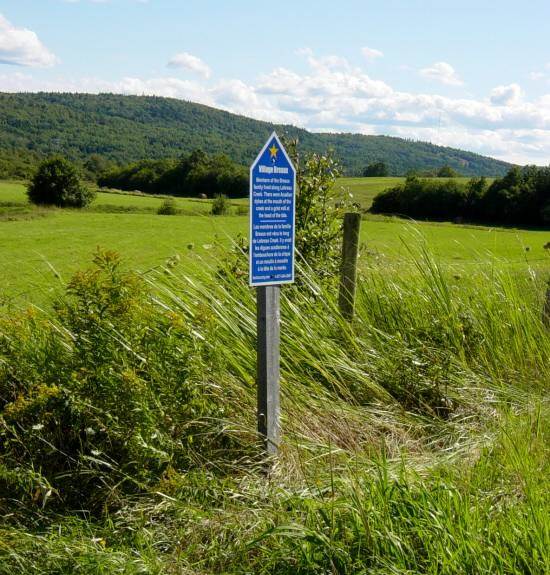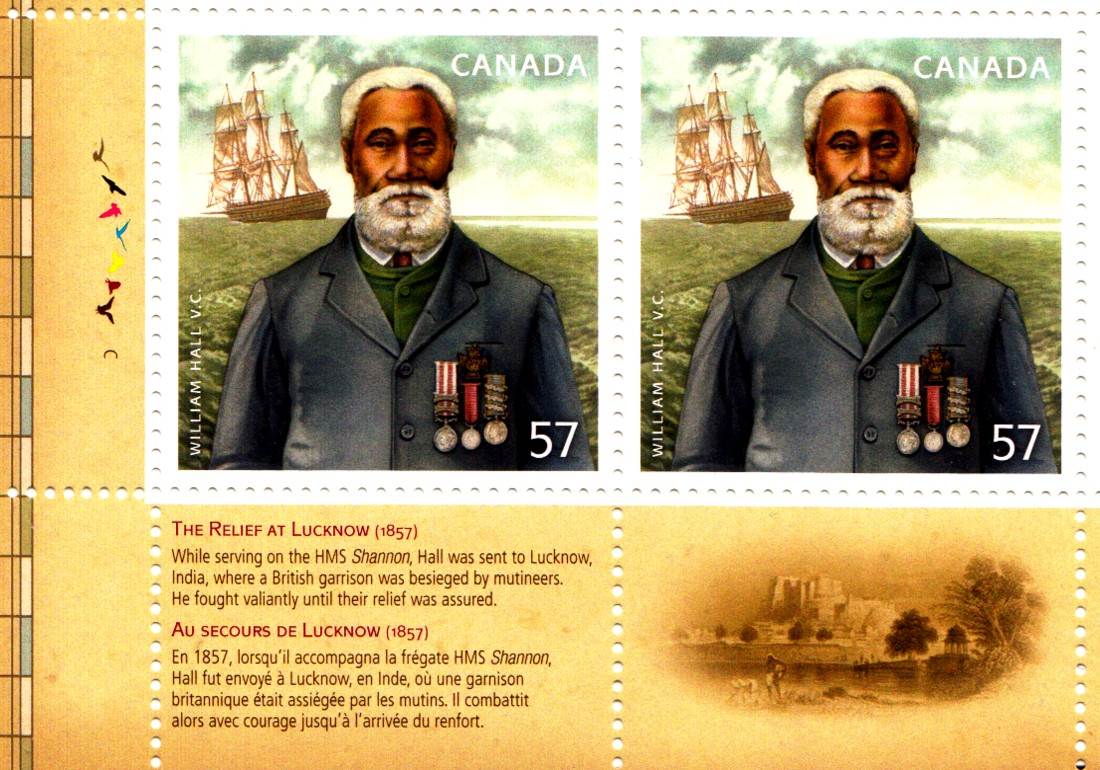
William Hall Victoria Cross
Lucknow November 1857
Photographs of Monument
Hantsport Hants County Nova Scotia
Located at the intersection of Main and Willow Streets
GPS location: 45°03’51″N 64°10’51″W
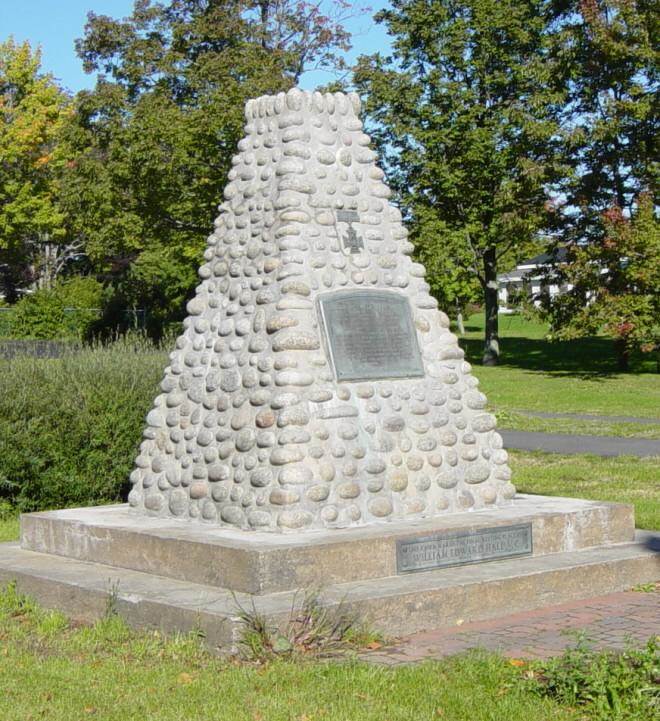
Photographed on 8 October 2002
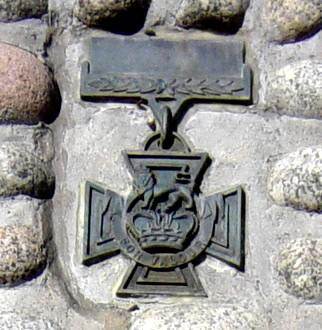
Photographed on 8 October 2002

Photographed on 8 October 2002

Photographed on 8 October 2002
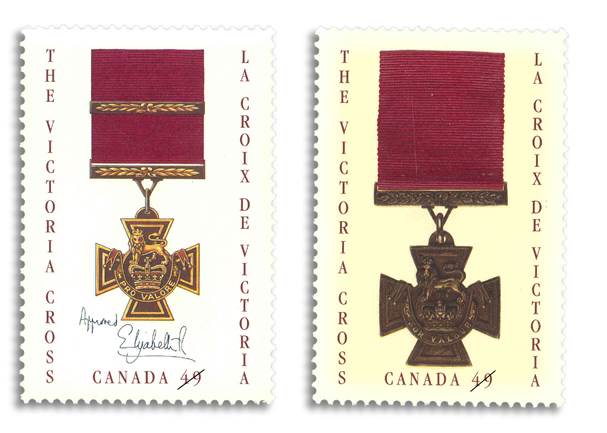
Victoria Cross commemorative stamp, 2004
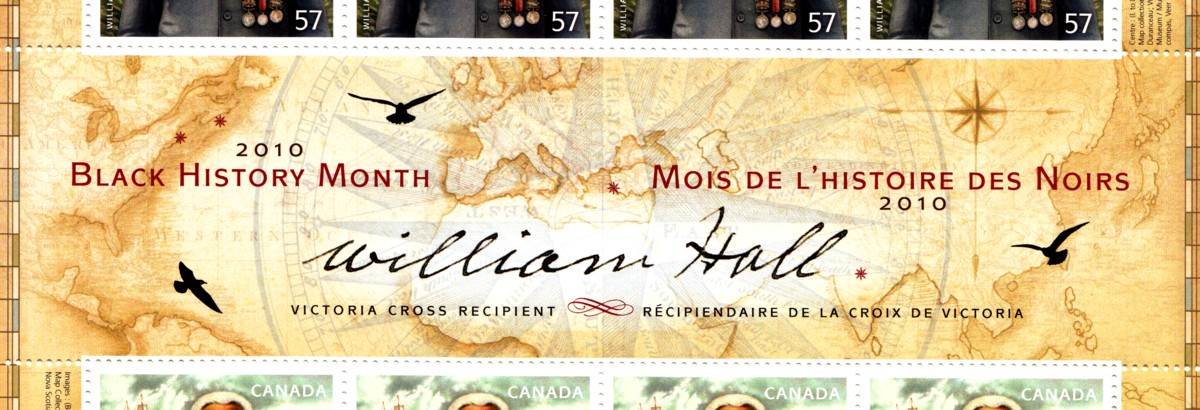
Title, pane of William Hall commemorative stamps
Black History Month, 2010
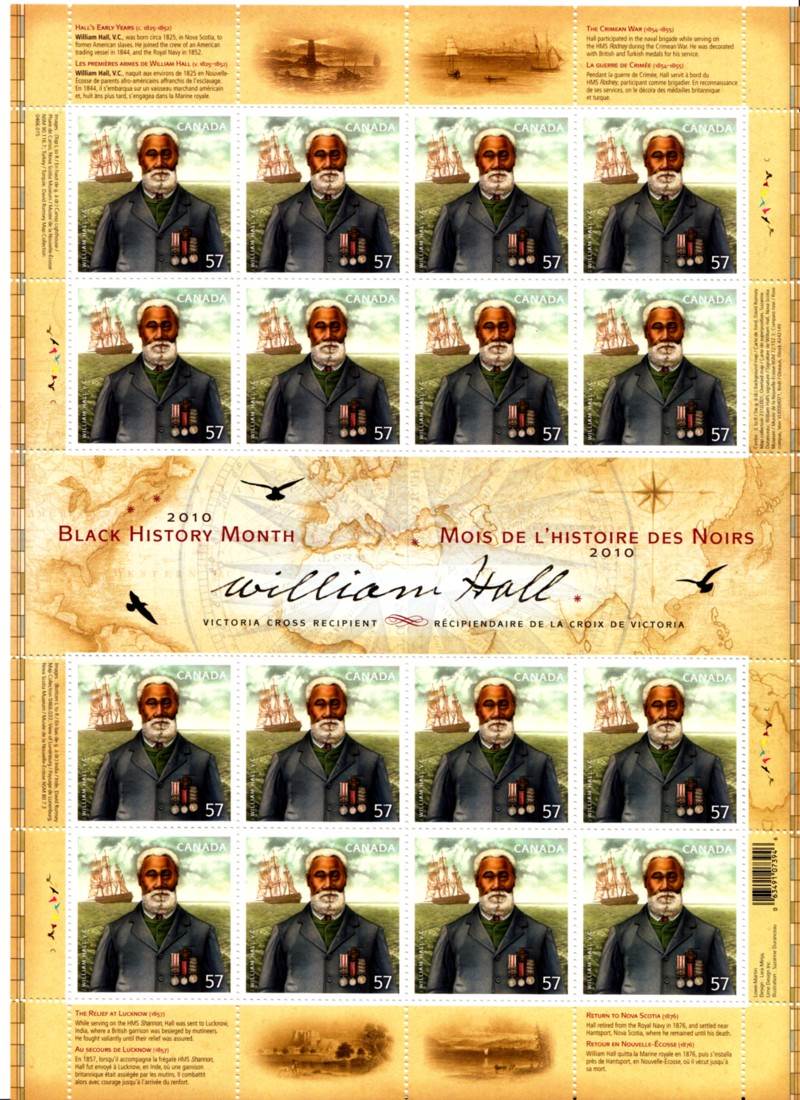
Pane of sixteen William Hall commemorative stamps
Black History Month, 2010
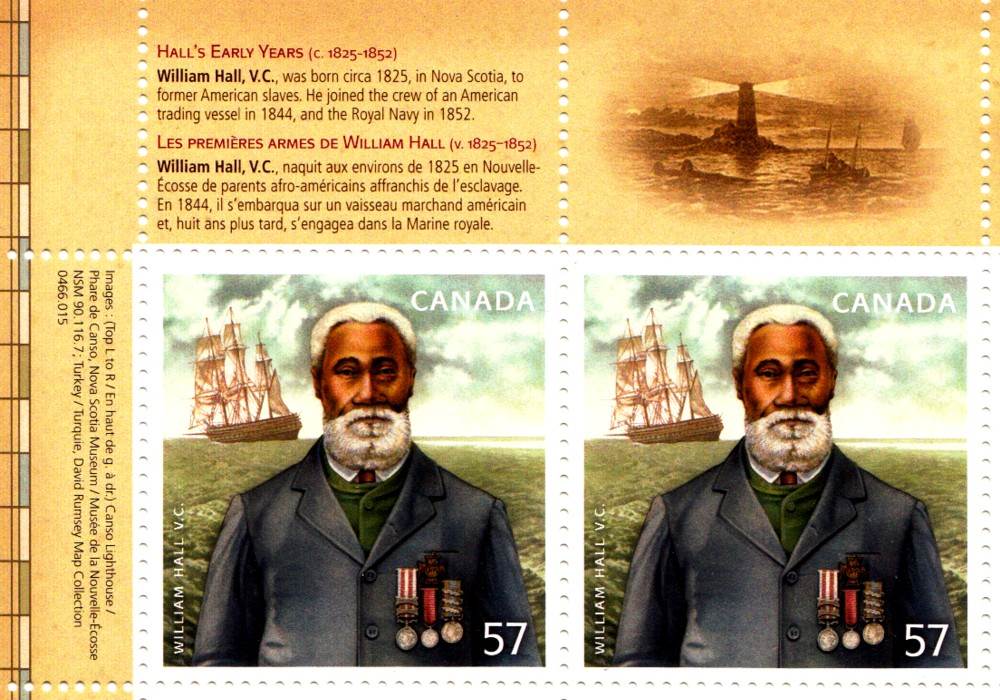
William Hall commemorative stamp
Black History Month, 2010
Upper left corner of pane

William Hall commemorative stamp
Black History Month, 2010
Lower left corner of pane

William Hall commemorative stamp
Black History Month, 2010
Upper right corner of pane

William Hall commemorative stamp
Black History Month, 2010
Lower right corner of pane
Medal entitlement of:
Petty Officer William HALL
Royal Navy ( Naval Brigade )
• Victoria Cross
• Crimea Medal ( 1854-56 )
• 2 clasps: “Inkermann” – “Sebastopol”
• Indian Mutiny Medal ( 1857-58 )
• 2 clasps: “Relief of Lucknow” – “Lucknow”
• Turkish Crimea Medal ( 1855-56 )
Engraving on reverse of Victoria Cross:
SEAMAN W. HALL
ROYAL NAVY
16 NOV.
1857
Source: http://www.victoriacross.org.uk/puhallw.htm
Military Hero Gets Highway Sign in His Honour
Premier’s Office, Halifax, Nova Scotia
November 10, 2010 9:54am
The province today, Nov. 10, named a connector road in Hantsport in honour of African Nova Scotian William Hall, the first recipient from the province, and first African Canadian, to receive the Victoria Cross medal forbravery.
Premier Darrell Dexter unveiled the William HallV.C. Memorial Highway sign at a ceremony at Province House. The sign, bearing Mr. Hall’s likeness, will be erected on the road from Highway101 to Trunk1 nearHantsport.
“Today, during the week of remembrance of those war heroes who fought and died for our liberty, we honour one of our own military heroes,” said Premier Dexter. “Mr.Hall holds a special place in the province’s and the country’s history. He was the first Nova Scotian and the first African Canadian to receive this award and deserves to be celebrated for hiscourage.”
Born in 1827, Hall worked in shipyards in Hantsport as a young man, building wooden ships for the merchant marines. He later crewed on a trading vessel and travelled the world before his 18th birthday. While in England in 1852, he enlisted in the Royal Navy as an ableseaman.
While sailing to China, his ship was ordered to assist British troops who had lost the fort at Lucknow, India, during the Indian mutiny against the British in 1857. Mr. Hall was one of the last men standing and he kept firing his gun, finally breaking a hole into the wall of the fort that allowed troops to enter and regain it. For this act of bravery, he received the Victoria Cross, the highest medal given in the BritishCommonwealth.
Mr. Hall lived the rest of his life in Nova Scotia and is buried in Hantsport. His grave is recognized by a monument at the nearby Baptist church.
The government of Nova Scotia retrieved Mr. Hall’s Victoria Cross medal from Britain in 1967. It is on permanent display at the Maritime Museum of the Atlantic in Halifax. During African Heritage Month 2010, Canada Post honoured Mr.Hall by issuing a commemorative stamp with hislikeness.
— Source:
Nova Scotia Government press release
Maritime Museum Celebrates Nova Scotian on Canada Day
Department of Tourism, Culture and Heritage, Halifax, Nova Scotia
June 30, 2010 2:37pm
The Maritime Museum of the Atlantic is celebrating Canada Day with activities and a new display about an historic NovaScotian.
The museum’s navy gallery will unveil a new addition to its collection on Thursday, July1, the Victoria Cross awarded to William Hall, the first African Nova Scotian to receive that honour. The artifact is part of an updated gallery exhibit coinciding with Canadian Navy’s centennial.
“Mr. Hall’s story is an important part of Nova Scotia’s history and Canada Day is a perfect time to learn more about his contribution to our military heritage,” said Minister of Tourism, Culture and Heritage Percy Paris. “Nova Scotia’s provincial museums bring our history and culture alive and make life better for families in everyregion.”
Able-seaman William Hall was born near Hantsport in 1827. After serving on merchant ships, he joined the British Royal Navy in 1852. In 1857, while serving aboard HMS Shannon, Mr.Hall was part of the relief force sent to Lucknow, India, where mutineers had besieged the British garrison. All the naval gunners on board were killed except an injured naval lieutenant and Mr.Hall, who continued to load and fire his gun until the fortress fell. He was awarded the Victoria Cross in 1859 for his gallant conduct.
The museum will be open July 1 from 9:30 a.m. to 5:30 p.m. Families can enjoy crafts all day long, dress up in costumes, practice knot-work activities and participate in a pirate scavengerhunt…
— Source:
Nova Scotia Government press release
Admiral H.F. Pullen’s effort to preserve Hall legacy deserves a medal
links to relevant websites
The Register of the Victoria Cross
http://tvwiki.tv/wiki/The_Register_of_the_Victoria_Cross
The Victoria Cross is by far the world’s most coveted medal for bravery. Cast in bronze from the cannons captured at Sevastopol in the Crimean War (1853-1856), the Victoria Cross retains a mystique that no other decoration has ever achieved. Although instituted more than a century ago and spanning the four most terrible wars in Britain’s history, it has been awarded to only 1350men, three of whom have won it twice, plus one more for the American Unknown Warrior, who lies buried in Arlington National Cemetery, Washington, as a symbol for all those who died in the Allied cause. The British Unknown Warrior, who was buried in Westminster Abbey, received the Congressional Medal of Honor from the United States Government. He was not awarded the Victoria Cross…
William Hall by Wikipedia
William Hall V.C. by Canada Post
William Hall clippings mostly from the Berwick Register
http://www.rootsweb.com/~canbrnep/whallvc.htm
A letter in the Toronto Globe and Mail, 14September 1938, calls attention to the fact that August25th is the anniversary of the death of the only Canadian-born negro to be awarded the Victoria Cross for valor in battle, and to the lamentable fact that his grave is notmarked.
Map showing location of Lucknow
http://mapsofindia.com/maps/uttarpradesh/location.htm
History of the Brigade of Gurkhas
http://www.army.mod.uk/gurkhas/history.aspx
In the Indian Mutiny of 1857-1858 the 2nd Goorkhas showed striking proof of their loyalty at Delhi where, together with the 60thRifles (now part of TheRifles), they held Hindu Rao’s house, the key to the British position which was under continuous fire from the mutineers, for over three months. During this period the 2ndGoorkhas suffered 327casualties (including 8of their 9British Officers) out of a total strength of 490. Also during the mutiny, 12Nepalese Army Regiments, a force of 8,000men under the personal leadership of the Prime Minister of Nepal, took part in the final relief of Lucknow…
references, ink-on-paper
Many excellent books have been published
on the subject of the Indian Mutiny of 1857.
A few are mentioned below:
Devil’s Wind: The Story of the Naval Brigade At Lucknow by Major-General G.L. Verney,
176 pages, published 1956 by Hutchinson & Company, London, England
The Indian Mutiny of 1857 by Colonel G.B. Malleson, 421 pages, published 1892;
facsimile edition published 1993 by R.J. Leach Company, London, England
Kaye’s and Malleson’s history of the Indian mutiny of 1857-8, Volume 4 published 1889, by Sir John William Kaye and George Bruce Malleson
Google Books
Battles of the Indian Mutiny by Michael Edwardes, 216 pages, published 1969
by Macmillan Company, New York
Lahore to Lucknow: Journals of Arthur Moffet Lang edited by David Bloomfield, 192pages, published 1991 by LeoCooper Books, London, England; based on the Diaries of Arthur Lang, an officer in the Bengal Engineers during the Indian Mutiny. Lang played a vital role in the siege of Delhi and was three times recommended for the Victoria Cross. He was also at the recapture of Lucknow. He was the only Engineer Officer who took part in all the main battles of theMutiny.
The Siege of Lucknow, 1857
Lucknow, population about two million people in 2002, is the capital of Uttar Pradesh state, in north central India, on the Gomati River. Lucknow was the capital of the kingdom of Lucknow suffered heavy casualties during a siege, June to November1857. If Delhi was the symbolic centre of the Mutiny, and Cawnpore provided its most horrific episode, it was Lucknow that caught the imagination of the British public and became, perhaps, the most well-known action of all Britain’s 19th century wars. It had all the dramatic elements of a siege and even better, a happy ending. It became indeed a paradigm for later British colonial conflicts. There were the initial reverses, the spectacle of the ‘thin red line’ battling against overwhelming odds, heroism in the face of adversity, the stoicism of the ladies living in appalling conditions, the death of a gallant commander, finally the sound of bagpipes on the wind and a relief column marching into the British position with flags flying and kilted highlanders leading the way…
http://www.geocities.com/Broadway/Alley/5443/indmut5.htm


